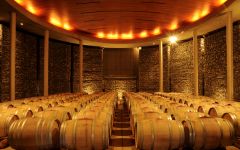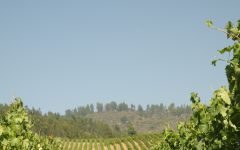Matetic Corralillo Syrah 2006
-
Wine &
Spirits


Product Details
Your Rating
Somm Note
Winemaker Notes
The wine has a deep violet color with intense varietal violet aroma, dark fruits and spices that marries well with the slight oak notes. Flavorful in the mouth with great body, complexity and fresh long finish. Recommended to serve with red meat, aged or smoked cheeses.
Best served at 64 degrees F.
Professional Ratings
-
Wine & Spirits
A simple purity of red and black fruit drives this wine, with notes of cranberry, raspberry and cassis emerging with touch of black pepper as the wine sits in the glass. The texture feels tight and the flavors of red fruit are refreshing and bright; delicious with blood sausages.
Other Vintages
2009-
Wine
Enthusiast
-
Wine &
Spirits -
Wine
Spectator -
Wine
Enthusiast
-
Robert
Parker






The story of the Matetic Winery begins in 1999 when the Matetic family decided to diversify their business ventures and enter the world of wine, confident in the virtues of the climate and soils in the Rosario Valley. With a firm conviction in the vital importance of maintaining a strong professional team to guide every step of the project, the family incorporated Alan York (Biodinamic Consultant), Ken Bernards (Consulting Winemaker), and Ann Kraemer (Viticultural Consultant) into the project in 2000 to ensure that Matetic wines achieve the highest quality. The EQ stands for Equilibrium... balance.

Marked by an unmistakable deep purple hue and savory aromatics, Syrah makes an intense, powerful and often age-worthy red. Native to the Northern Rhône, Syrah achieves its maximum potential in the steep village of Hermitage and plays an important component in the Red Rhône Blends of the south, adding color and structure to Grenache and Mourvèdre. Syrah is the most widely planted grape of Australia and is important in California and Washington. Sommelier Secret—Such a synergy these three create together, the Grenache, Syrah, Mourvedre trio often takes on the shorthand term, “GSM.”

Dramatic geographic and climatic changes from west to east make Chile an exciting frontier for wines of all styles. Chile’s entire western border is Pacific coastline, its center is composed of warm valleys and on its eastern border, are the soaring Andes Mountains.
Chile’s central valleys, sheltered by the costal ranges, and in some parts climbing the eastern slopes of the Andes, remain relatively warm and dry. The conditions are ideal for producing concentrated, full-bodied, aromatic reds rich in black and red fruits. The eponymous Aconcagua Valley—hot and dry—is home to intense red wines made from Cabernet Sauvignon, Syrah and Merlot.
The Maipo, Rapel, Curicó and Maule Valleys specialize in Cabernet and Bordeaux Blends as well as Carmenère, Chile’s unofficial signature grape.
Chilly breezes from the Antarctic Humboldt Current allow the coastal regions of Casablanca Valley and San Antonio Valley to focus on the cool climate loving varieties, Pinot Noir, Chardonnay and Sauvignon Blanc.
Chile’s Coquimbo region in the far north, containing the Elqui and Limari Valleys, historically focused solely on Pisco production. But here the minimal rainfall, intense sunlight and chilly ocean breezes allow success with Chardonnay and Pinot Noir. The up-and-coming southern regions of Bio Bio and Itata in the south make excellent Riesling, Chardonnay and Pinot Noir.
Spanish settlers, Juan Jufre and Diego Garcia de Cáceres, most likely brought Vitis vinifera (Europe’s wine producing vine species) to the Central Valley of Chile sometime in the 1550s. One fun fact about Chile is that its natural geographical borders have allowed it to avoid phylloxera and as a result, vines are often planted on their own rootstock rather than grafted.
